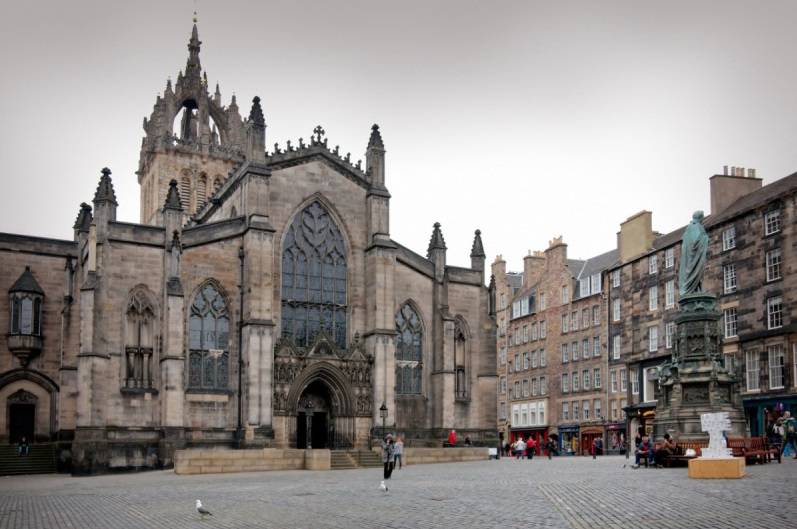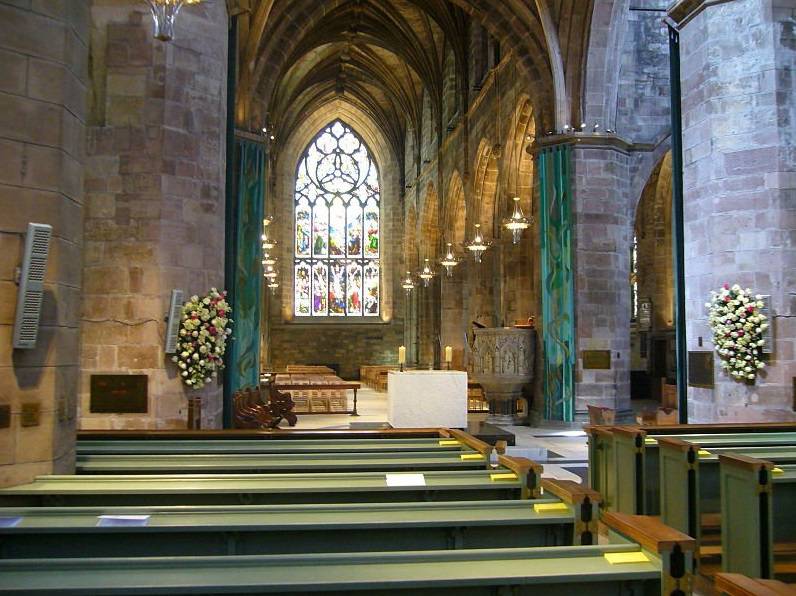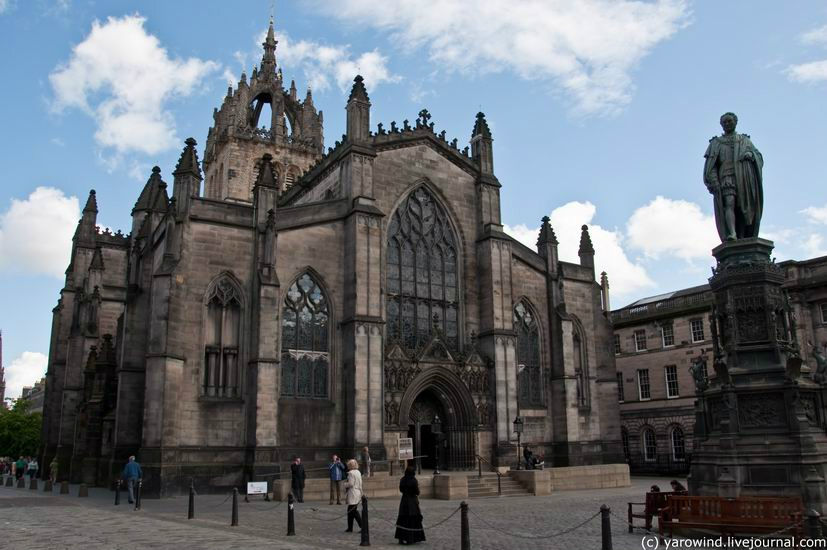St Giles' Cathedral, also known as the High Kirk of Edinburgh, is the principal place of worship of the Church of Scotland in Edinburgh. Its distinctive crown steeple is a prominent feature of the city skyline, at about a third of the way down the Royal Mile which runs from the Castle to Holyrood Palace. The church has been one of Edinburgh's religious focal points for approximately 900 years. The present church dates from the late 14th century, though it was extensively restored in the 19th century, and is protected as a category A listed building.Today it is sometimes regarded as the "Mother Church of Presbyterianism". The cathedral is dedicated to Saint Giles, who is the patron saint of Edinburgh as well as of cripples and lepers, and was a very popular saint in the Middle Ages. It is the Church of Scotland parish church for part of Edinburgh's Old Town.
St Giles' was only a cathedral in its formal sense (i.e. the seat of a bishop) for two periods during the 17th century (1635–1638 and 1661–1689), when episcopalianism, backed by the Crown, briefly gained ascendancy within the Kirk (see Bishops' Wars). In the mediaeval period, prior to the Reformation, Edinburgh had no cathedral as it was under the jurisdiction of the Bishop of St Andrews, whose episcopal seat was St Andrews Cathedral. For most of its post-Reformation history the Church of Scotland has not had bishops, dioceses, or cathedrals. As such, the use of the term cathedral today carries no practical meaning. The "High Kirk" title is older, being attested well before the building's brief period as a cathedral.
The oldest parts of the building are four massive central pillars, often said to date from 1124, although there is very little evidence to this effect. In 1385 the building suffered a fire and was rebuilt in the subsequent years. Much of the current interior dates from this period. Over the years many chapels, referred to as 'aisles', were added, greatly enlarging the church and leaving it rather irregular in plan. In 1466 St Giles was established as a collegiate church. In response to this raising of status, the lantern tower was added around 1490, and the chancel ceiling raised, vaulted and a clerestory installed. By the middle of the 16th century, immediately before the Reformation arrived in Scotland, there were about fifty side altars in the church, some of which were paid for by the city's trade incorporations and dedicated to their patron saints .
At the height of the Scottish Reformation the Protestant leader and firebrand John Knox was chosen minister at St Giles by Edinburgh Town Council and installed on 7 July 1559. A 19th-century stained glass window in the south wall of the church shows him delivering the funeral sermon for the Regent Moray in 1570. The reformer was buried in the kirkyard of St Giles on 24 November 1572 in the presence of the Regent Morton who, at his graveside, uttered the words, "There lies one who neither feared nor flattered any flesh". A bronze statue of Knox, cast by Pittendrigh MacGillivray in 1904, stands in the north aisle.
During the Reformation the Mary-Bell and brass candlesticks were scrapped to be made into guns, and the relic of the arm of St Giles with its diamond finger ring (acquired in 1454) and other treasures were sold to the Edinburgh goldsmiths Michael Gilbert and John Hart, and the brass lectern to Adam Fullerton, for scrap-metal. By about 1580, the church was partitioned into separate preaching halls to suit the style of reformed Presbyterian worship for congregations drawn from the quarters of Edinburgh.The partition walls were removed in 1633 when St Giles became the cathedral for the new see of Edinburgh. In that year King Charles I instructed the Town Council.












